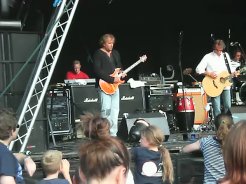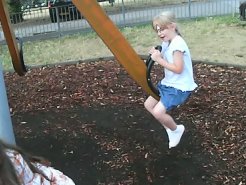Review: Nokia N93 (part one - Multimedia)
Score:
85%
Version Reviewed: v10.0.017
Foreword
Before getting started, a word of explanation about this review and why it's in two parts. The N93, perhaps more than any other Symbian OS device, has one huge, dominating raison d'etre, the camera and camcorder functionality. Allied perhaps with the multimedia playback both on-screen and via UPnP and wired TV monitor. This part of the review will cover these areas and is scored as such.
Part two, with its own score, will come in a week or two's time and will cover the Nokia N93 as a whole, i.e. how well or badly it does as a day-to-day smartphone, in addition to any ad-hoc camera requirements. If you're desperate for an overall score, you might like to average the two...!
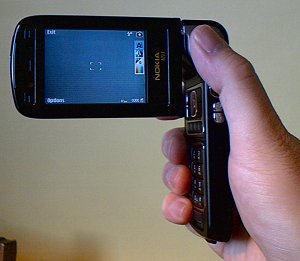 Introduction
Introduction
At first glance, the Nokia N93 is huge. Closer inspection reveals that, er... it IS huge, but that there's a good reason for it. The camera module, across the top of the device, has fixed dimensions and these rather dictate the overall thickness and width of the rest of the smartphone. In case you've been out of the solar system and out of touch with the smartphone world, and in terms of multimedia relevance, the features you really need to know about are: - The camera. 3.2 megapixels (2048 by 1536 pixels), with a unique (for S60) 3x optical zoom. What this means in practice is that you can zoom in to a factor of 3 before any digital zooming is applied. So, right up to that point, you still get the full 3.2mp resolution at full quality. Even the Nokia N90, its spritual predecessor, didn't have an optical zoom.
- The camcorder. The same CMOS array is used, with the same Carl Zeiss optics but without the auto-focus, to capture video at VGA resolution (640 by 480 pixels) at 30 frames per second. Note that this isn't technically 'DVD-quality' (usually 720 by 576 pixels in Europe), but it's close enough for most practical purposes.
- The screen. The 2.4" display on the N93 is fabulous. Really. The colours are gorgeous, the contrast is to die for, even outdoors in bright sunlight, and it's a great complement to the camera functionality.
- The internal and external memory slots. 50MB of internal flash memory is where who should install most of your third party applications, so that you can keep the miniSD card for video capture. You'll need it. 10 minutes of video (typical for messing around with your family during a day out) will need 280MB. Take the N93 away for a week and you'll almost certainly be using up the lion's share of a 2GB card, especially when you factor in photos at over a megabyte a time.
- UPnP. The N93 can connect to and interact with UPnP devices via WiFi. This includes the ability to share files on the N93 so they can be accessed via other UPnP devices or to access files on other UPnP devices (the N93 can copy them to its own memory). The N93 also acts as a UPnP remote control allowing you to control the media shown or played on other devices.
- The Pop-port and TV-out lead. A first for a smartphone, the N93 can drive a TV (or any other AV equipment) directly via the supplied Pop-port to Composite (Red/Yellow/White) lead. This works brilliantlyand from any application, from RealPlayer to general applications to games. A dedicated 'TV out' utility lets you choose the TV standard to use (PAL/NTSC) and screen aspect ratio.
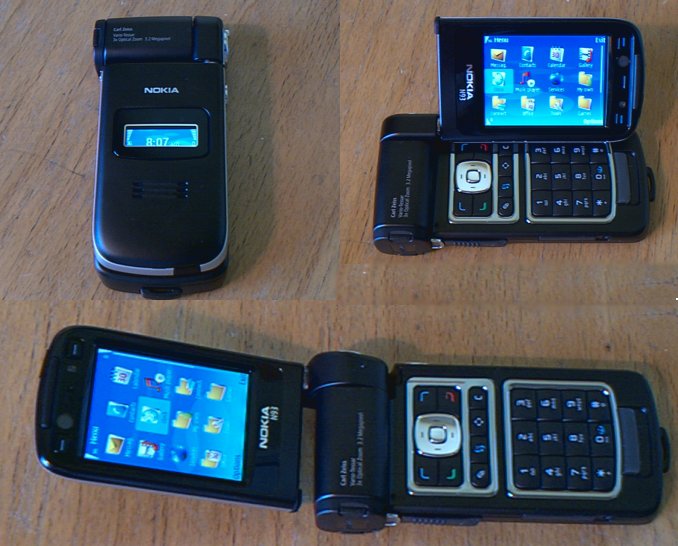
The Camera
There are plenty of design issues worth commenting on, too. Having the camera module as part of the main body of the smartphone is more robust than the N90's multiple-hinge design, but it also limits what can be shot. In order to film something you've got to lift the smartphone, open it out into the vertical and then keep the device's lens pointing straight ahead. While this all sounds sensible, it's worth noting that the N90 allowed shooting at almost any angle (including behind you) and also allowed photos while the clamshell itself was closed. Thus the N93 seems a lot more restrictive in this regard, but putting it into perspective with humbler smartphones, at least the screen itself can be angled, so that you can position the N93 up high or down low and still be able to use the screen as a viewfinder.
The main shutter button is positioned directly behind the lens, meaning that the very act of pressing it (gently at first to kick off the auto-focus, then harder to take the image) tends to nudge your aim downwards. With practice you can allow for this and brace your grip, but it's disconcerting at first when taking photos. Video recording merely requires a press to start and a press to stop, of course, so it doesn't really suffer from the same problem.
The N93 comes with a clip-on lens cap. I haven't lost mine yet, though it tends to pop off somewhat violently and I'd guess that Nokia will be selling packs of 3 replacement caps on its web site shortly. There's a little lanyard in the box, but to be honest it's best just to stick the cap in your pocket when the camera's being used. There's also an even more fiddly Pop-port cover that's, alas, even more loseable.

The 3x optical zoom is operated via a ring jog dial that circles the shutter button. This works well as you easily adjust the zoom before taking a photo. Beneath the shutter button there is a four way navigator. It is used to change the camera settings via a series of pop out icons. These settings include shooting mode (automatic, user, close-up mode, landscape, night and night portrait), white balance (automatic, sunny, cloudy, incandescent and fluorescent), exposure (+2 to -2) and colour tone (normal, sepia, black and white and negative). This secondary navigator effectively duplicates the main four way navigator of the phone. However, in camera mode only this secondary direction pad can be used. Due to its position on the side of the phone, it's necessarily small and is a bit fiddly to use.
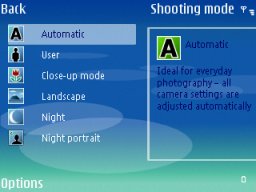
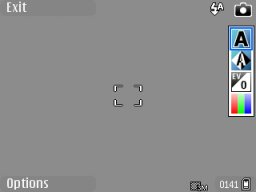
Further options can be reached using the options menu, accessed used the second softkey buttton. Although the buttons are on the opposite side of the screen to the other controls, it's more intuitive than you might think, as you 'll be holding the device in two hands most of the time anyway when taking pictures or videos.
In this camera mode, the the options menu includes sequence mode, self timer mode (2, 10 or 20 seconds) and other settings, including captured image size. In video mode, the settings include both video size and an on/off toggle for video stabilization and audio recording.
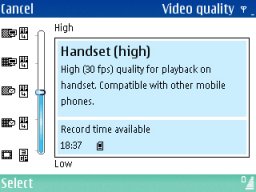
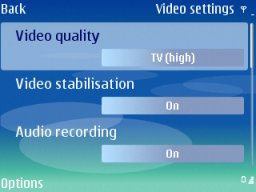
Beneath the secondary navigator are two buttons (camera/video mode and flash mode). Pressing the latter in camera mode cycles the flash mode between automatic, on and off. In video mode, the button turns the flash LED light on or off. As a bonus, it also works as torch when the phone is closed, a function that's surprisingly useful.
To use the 3.2 megapixel camera, you must swivel the screen through a right angle, with this action starting the camera application. However in any other mode, 'Camera' uses the secondary (VGA/video calling) camera. It is a shame that you cannot switch back to the main camera, to take candid images and videos to your left hand side. One related annoyance is that when you rotate the screen back into clamshell mode, after using the camera, the application stays active but switches to the secondary camera, meaning that you're taken from your peaceful photographic experience of your subject to seeing an image of your own face - which can come as a bit of a shock!
The proof of the pudding is in the eating, of course, especially with this review's focus on the multimedia performance. Before going any further, let us state that there's no way the N93 is good enough to displace a standalone digital camera of similar specification for even semi-professional use. The lens and CMOS array are just physically too small and the handling of extremes of light and dark just isn't flexible enough. In very bright light there are slightly washed out colours, and in dim conditions (e.g. indoors) there will be lots of picture 'noise' and blur on any moving objects. Contrast this with a standalone camera, which will have a large enough lens and enough sensor intelligence to gather and cope with an awful lot more photons of light.
The same applies to video recording, where movies captured on the N93 will be fine for inclusion on home movie DVDs or for transcoding and putting up on web sites, but for any kind of semi-professional use you'll be disappointed. Quite apart from 'only' being VGA resolution and not employing focussing (so you can't shoot anything closer than a metre away without it being blurred), the MPEG-4 encoding used by necessity means that dark areas of the video picture show all kinds of compression artefacts - fine for showing your uncle Joe and Hilda but distinctly unimpressive when showing off a short video to your boss. There are also minor issues when zooming, with the 'steps' in the zooming mechanism very visible optically and audibly (there's a slight 'rat-a-tat-a-tat' noise).
BUT - don't be disheartened and think that we're being unduly negative. The N93 is still the best camera/camcorder smartphone we've ever used, by quite a margin. And that alone makes it worth considering if you've got plenty of stuff to shoot in addition to your normal smartphone requirements. For the majority of people, the results produced will be more than good enough, either for display as desktop wallpapers or in slide shows or as paper prints. The N93 out performs budget digital cameras (~£100) in most areas. What you shouldn't underestimate is the 'always with you' factor. While a digital camera may often be left at home, the N93 will not and as such you are much more likely to be capturing every day life with the N93, not just the camera-ready staged moments.
To illustrate the quality of the N93's pictures, here are comparison blowups of identical shots of the same object taken on four Nokia smartphones: the vintage 6630, last year's N70 and N90, and N93. Resolution, quality and detail increase as you'd expect, though the difference between the 1.3 megapixel image from the 6630 and that from the N93 is so marked that you wonder how anyone could be satisfied with the smaller camera. Yet, to put things into perspective, the Nokia 6630's camera is leagues ahead of the 1.3 megapixel cameras used in many competing feature and Windows Mobile phones, making the N93's quality even more obvious.
Nokia 6630, N70 and N90:


Nokia N93: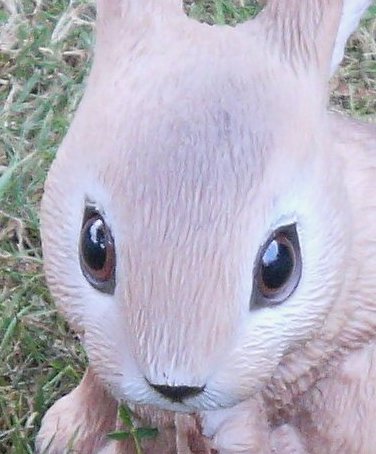
To give you an idea of finished sample photos and videos, there's a big selection below, along with comments. Playing them back on the N93 itself works very well indeed, thanks to the size and quality of the main screen. Video playback is in RealPlayer, as usual, but it seems to have been tweaked since the last time I looked around its menus and things like starting playback in full screen mode are now a firm option, thankfully.
As with the N90 predecessor, there's basic editing support for both pictures and videos accessible from the Gallery application. Photos can have the usual Nseries gallery of effects applied, including Sepia, Negative, Brightness, Clip-art, Sharpness, Contrast, Resize and Red eye reduction. Each effect has an appropriate slider or options gallery and applying each effect is fairly quick. Keen photographers will have plenty to fiddle with here, while waiting to get back to their desktops for greater control.


Built-in video editing functions include cutting (cropping) footage, merging clips together, adding a new soundtrack (from a previously recorded file or music track), adding text titles (very, very slow to render), a 'slow motion' effect (with configurable speed) and the horribly slow (within the video editor at least) 'muvee' system. You'll almost certainly be doing most video editing on your desktop though, so on-device editing will in most cases be limited to simply cropping clips to delete wasted footage and preserve disk space. Still, it does offer an impressively complete on-device editing solution.

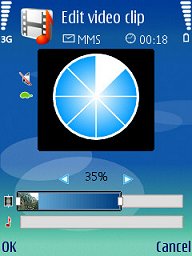
A simpler form of video and image editing is the creation of muvees, styled video clips which mix videos, photos, graphics and text. The output can be quite effective and can, optionally, be optimised for MMS output which can result in something which is actually worth sending as an MMS message.
Gallery also includes an Open online service entry in its options menu. This is for the Flickr integration that was touted at the device's launch. The online service uses the Atom publishing protocol and will work with other compatible services such as Typepad. Once you have configured the application with your Flickr account details, photos can be uploaded by adding them to a 'post' which is then sent to Flickr. This works well for sending one or two photos, but is time consuming for many photos. A better option may be to Conigma's Shozu application which is more flexible in its destinations and allows for automatic uploads.
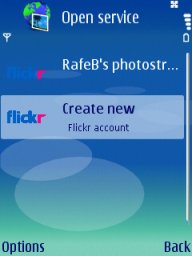
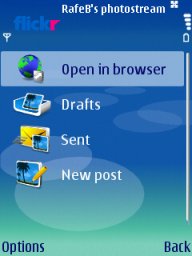
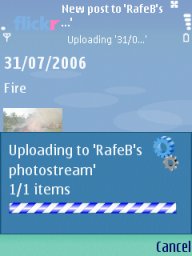
Nokia N93 Sample Photos
All pictures are thumbnails, click through for the full size photo. None of the photos have been edited or tweaked.
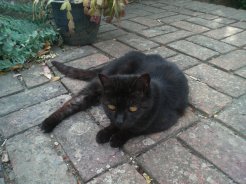

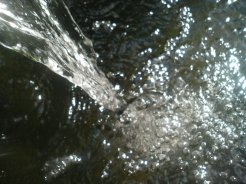
In automatic mode the N93 performs best in mixed sunny and cloudy conditions. In very bright light, pictures can be over exposed. This can be corrected by manually changing the exposure and/or white balance (to -1 and 'sunny' respectively).
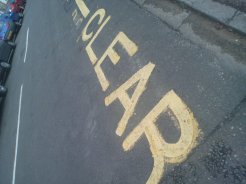
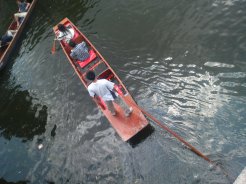
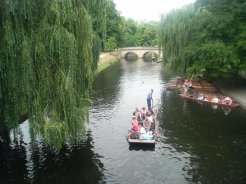
The N93 autofocus is the single best feature about the camera. While the Zeiss optics do produce more detail, the auto focus has the most impact on results for amateur photographer.

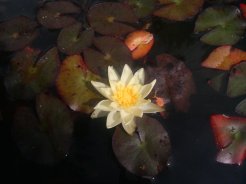
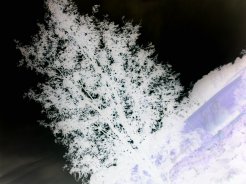
Colours are generally accurate, but can occasionally be over compensated. For close up works the best results are achieved when adjusting the settings. For most general shots, making settings adjustments makes little difference. Some startling results can be achieved with the on board negative, sepia and black and white filters.

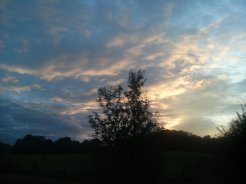
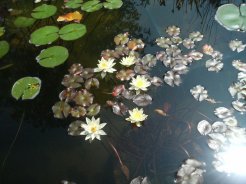
In tricky conditions (varying light) the N93 performs well, although there are, as with all cameras, some problems with glare.
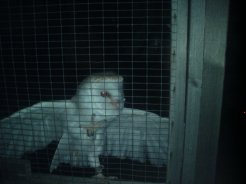
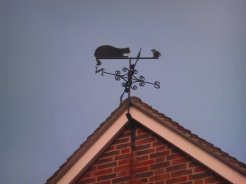
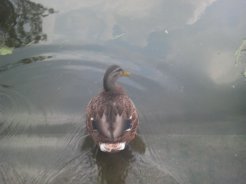
The N93 copes reasonably well in pitch black conditions (owl example), but the flash is not very strong so the subject must be close to the camera. Where there is some ambient light available results may be better using night mode rather than the anaemic flash. The optical zoom allows detailed shots of objects further away (weather vane and duck examples). It compares very favourably to other camera phones where cropping or use of digital zoom is necessary.
Nokia N93 Video samples
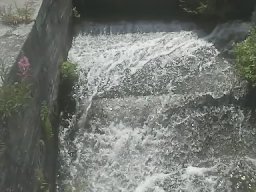

Video 1 (water - 4.5 MB) show a 180 degree fast pan with people and, water, vegetation and buildings. Video 2 (fire - 6.4 MB) shows capture of changing subject and use of optical zoom (you can hear the zoom mechanism in the audio track).
Video 3 (gig - 25MB) shows good optically zoomed picture quality but lousy handling of even moderately loud volume levels - this was an open air concert and not particularly loud, but the bass drum completely wipes out the audio track every time. Video 4 (roundabout - 12MB) shows very good handling of fast motion and, again, there's the noise of the zoom mechanism near the end of the clip.
UPnP
The Nokia N93 is a UPnP device (Universal Plug and Play). UPnP is a set of computer network protocols set by the UPnP forum aimed at allowing networked devices to connect together seamlessly and exchange information. In the case of the N93, it is used to share and control multimedia stored on the phone or on other UPnP devices on the same network via the phones WLAN connectivity.
In the Connect folder there is a 'Home network' application. This allows you to set your home Wi-Fi network, and whether to share image, music and video files. You can turn image sharing on and off, and this is effectively turning UPnP on and off. Once activated, other UPnP devices can see the N93 and access its files. Additionally an extra category is added to Gallery (Home Network) which allows you to access the content of other UPnP devices. This works by browsing a series of folders (the content of each remote device), and from the menu you can choose to copy multimedia to the N93 (a convienient way to get new content to your device) or show it on the UPnP device in question. This second function acts a little like a remote control allowing you to control (a slide show of) images shown and music played on the remote UPnP device directly from the N93. Unfortunately you cannot choose to play playlists, only to view them, which limits the usefullness of this remote function for music (to play back multiple songs on the remote deice you must select all of them first via a multi-select technique).
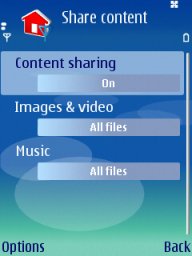
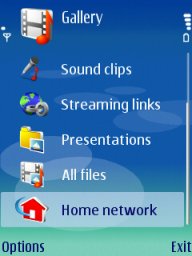
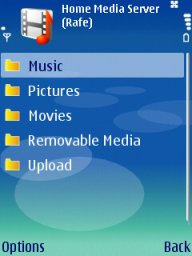
For multimedia stored on the N93, there are extra entries in Gallery's menu; these include the option to copy a multimedia item to another UPnP devices, move an item (deleting it from the N93), and show it on your home network. The first two functions are useful for manually moving multimedia off your phone, but there is also an automatic transfer function which should allow you copy all the images and videos off your device in one go. However, we could only get this to work with small files, not the MB images or multi-MB video files captured by the N93.
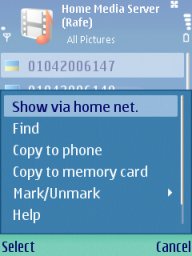
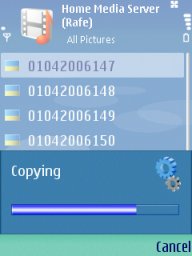
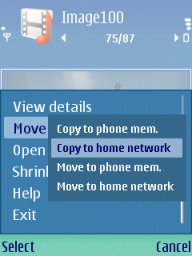
This last failure reflects a general problem with UPnP. It needs manufacturer support and is not yet widely used. UPnP devices do not always work with each other and can be slow to initiate actions. At times, the UPnP implementation in the N93 did not work (e.g. other devices couldnot be seen or transfers fail), although it is rarely clear whether this is the fault of the local or remote device. The problem is compounded by the fact that there is no definitive list of compatible devices (our Netgear 101 worked only partially with the N93). Furthermore, although most Wi-Fi routers now ship with UPnP support it is often turned off by default for security reasons. The cumulative effect may be frustration for end users.
For most people the immediate problem will be the lack of another UPnP device. Windows Media Connect (as used by the XBox and now shipping with Windows XP) is a UPnP server for Windows, but it did not work with the N93. Fortunately Nokia have provided an alternative. On the N93's CD is a UPnP server/client for Windows XP PCs called Home Media Server (a branded version of SimpleCenter). Using Home Media Server you can retrieve media from the phone and copy new media to the phone. You can also remotely control media shown on the PC from the N93, whether it is stored on the PC itself or on the N93.
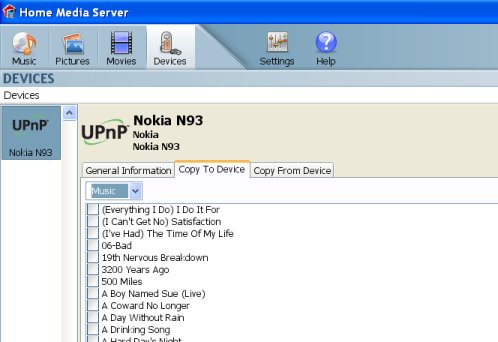
Since the connection bearer is Wi-Fi, transfer speeds are speedy, rivalling even a direct USB connection. This means when choosing to view an image from the phone on your PC the operation takes only a few seconds and makes running a slideshow of images stored on your phone on your PC practical. On the other hand, the Home Media Server software is lacking in some areas. For example, when copying media from the N93 a list of files is presented with tick boxes to select which files should be transferred, however there is no select all option, which means a tedious chore of ticking many boxes if you wish to transfer all the media from the phone in one go.
UPnP potentially offers fantastic functionality, but it seems it is early days for the technology and Nokia would be well advised to improve both the user experience and the compatibility issues.
TV-out
The TV-out function is much simpler than UPnP (just a Pop-port to 3-way RCA 'composite' cable to connect) and works very well. TV out function is made possible by the new graphics chip set in the N93 and its most common use will be for showing of images and videos captured by the phone. Settings can be tweaked via the TV-out application, but this should work out of the box for most people. Captured videos, in particular, are impressive and it is great fun to shoot a video and immediately be able to play it back on the TV.
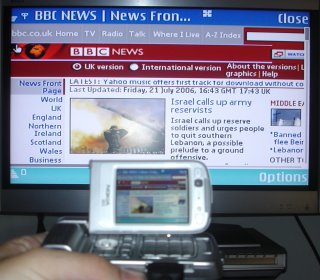 In fact, the screen exporting works with any application (it is a great way to demo S60 to people). Other potential uses include playing games or browsing the web on your TV. Any application that involves viewing information of the screen as a primary concern can benefit from being connected to a larger screen. It also open up new possibilities, for example with the TV-out function a video call can be shared more easily with more people. Using the N93 in this way might make for a good budget video conferencing system. The on board game, System Rush Evolution, is very playable on a bigger screen and gives a very positive pointer towards the next generation N-Gage gaming platform.
In fact, the screen exporting works with any application (it is a great way to demo S60 to people). Other potential uses include playing games or browsing the web on your TV. Any application that involves viewing information of the screen as a primary concern can benefit from being connected to a larger screen. It also open up new possibilities, for example with the TV-out function a video call can be shared more easily with more people. Using the N93 in this way might make for a good budget video conferencing system. The on board game, System Rush Evolution, is very playable on a bigger screen and gives a very positive pointer towards the next generation N-Gage gaming platform.
Most of the time the TV will show the same as the phone's screen. The exception to this is when viewing images or videos in Gallery - on the TV, these are displayed full screen even when browsing thumbnails on the phone.
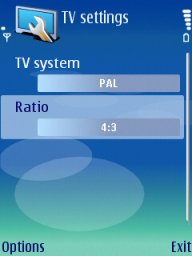
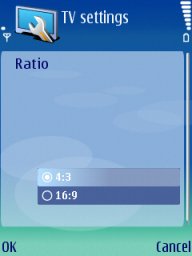
The TV-out cable can also be used to connect the N93 to most audio systems (via auxillary inputs). This means you can play MP3s from the phone, controlled from the Music application, over your home Hi-Fi system in full stereo sound and it makes the N93 even more versatile. The quality of audio output is excellent, making the N93 an impressive digital audio player.
In some ways TV-out is the most compelling function of the N93 and I hope we see it again on future S60 devices.
Conclusion
It's hard to summarise the multitude of good and bad points above in a single paragraph - we'll leave a final verdict for part two of the N93 review, after we've lived with it day-in and day-out for longer. But in the meantime we'd say that the Nokia N93 is the best multimedia smartphone we've ever seen - but that it's also not perfect and in some ways points the way towards its own successor, surely to come in 2007 and beyond, as as the optics and electronics start to converge more seriously on the world of professional standalone digital cameras.Steve Litchfield and Rafe Blandford, 31 July 2006, text tweaked after Nokia's 11.0.034 firmware upgrade, performed mid October 2006.
Reviewed by Rafe Blandford, Steve Litchfield at

